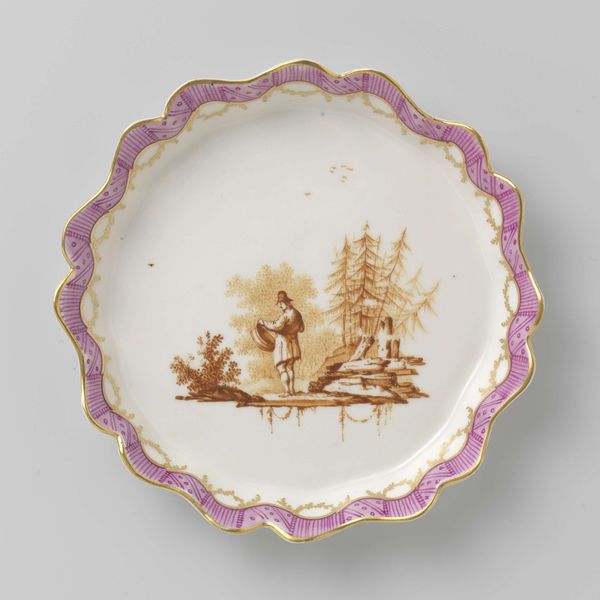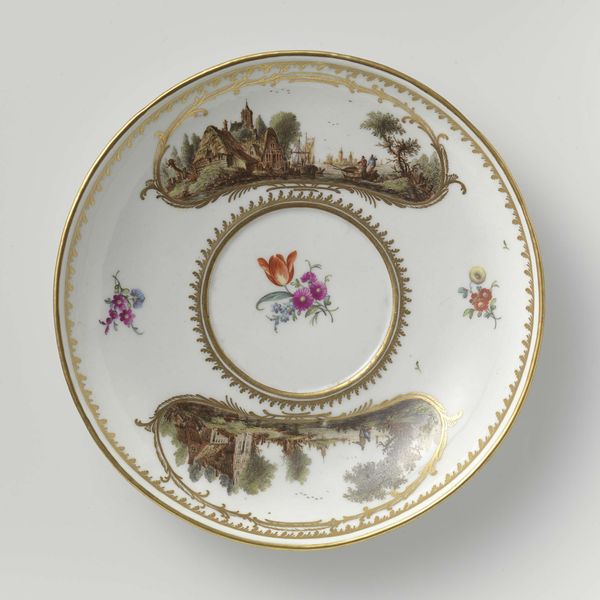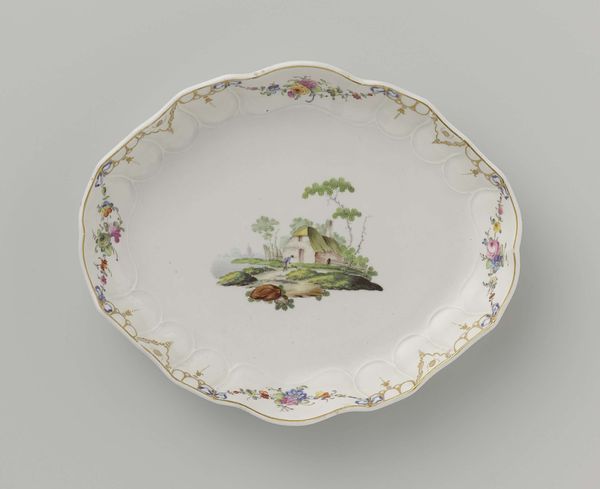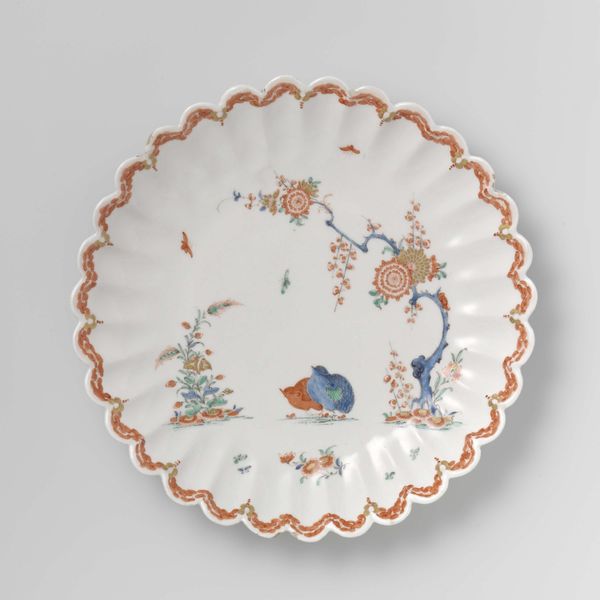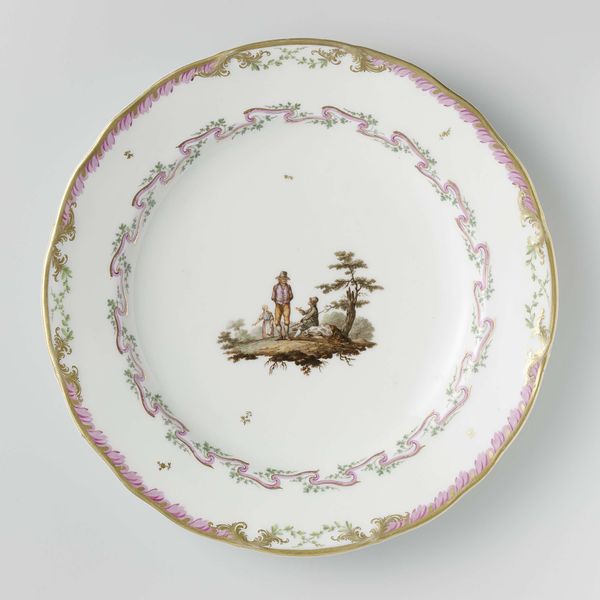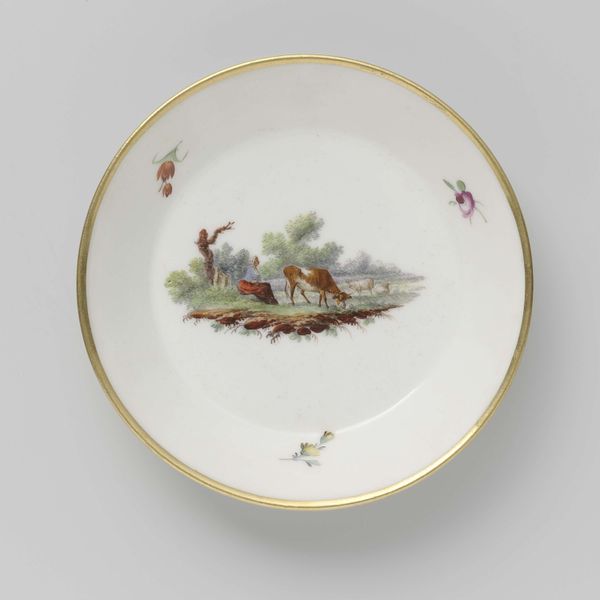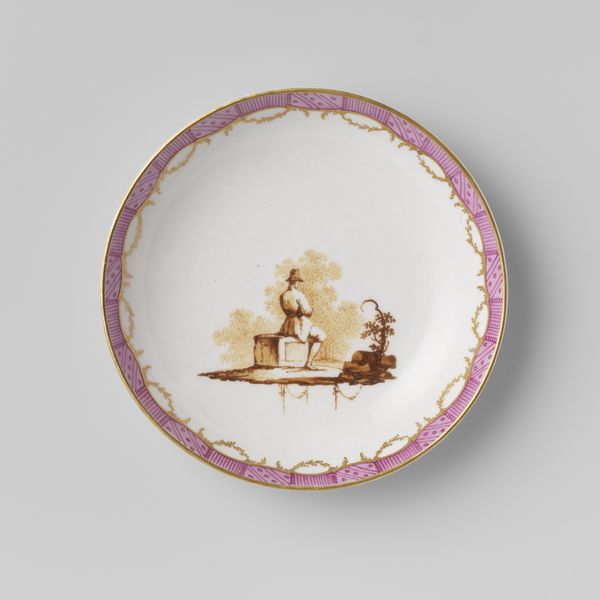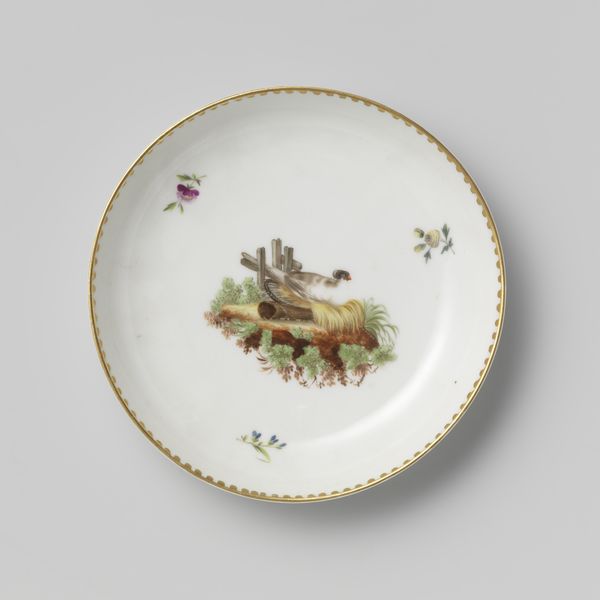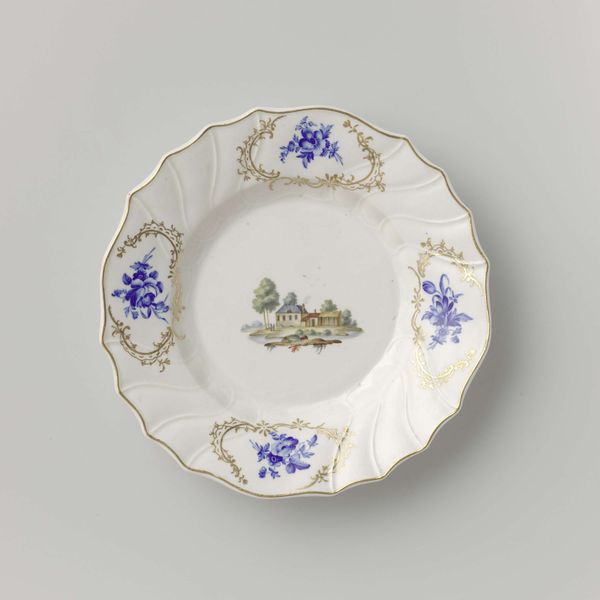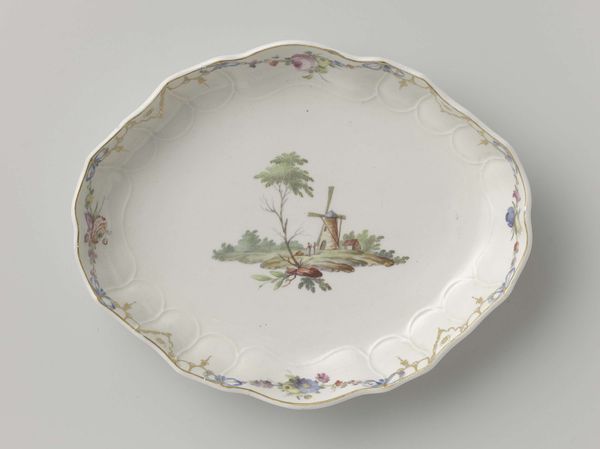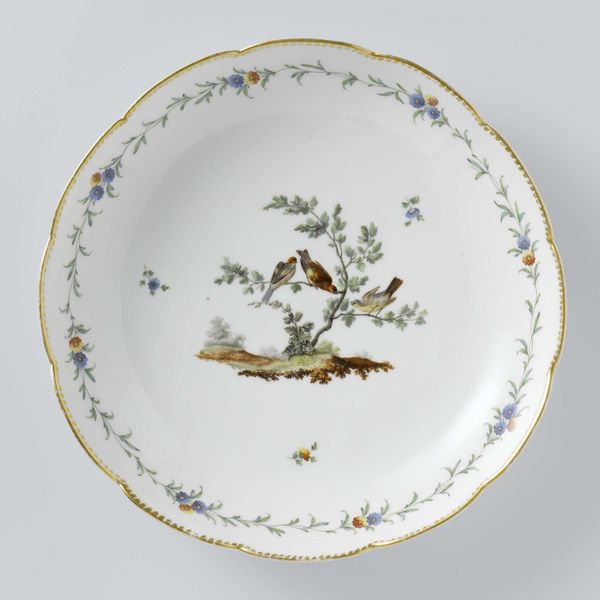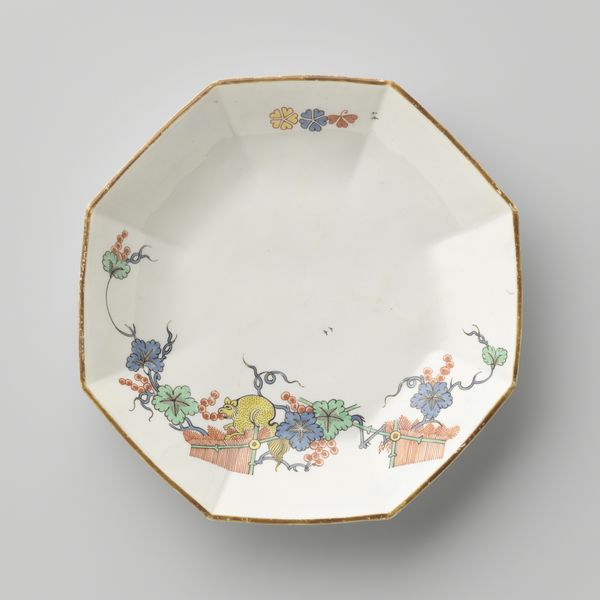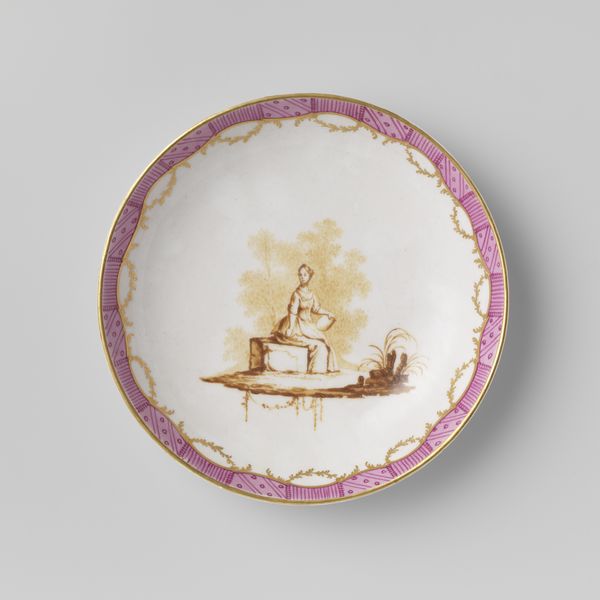
Dimensions: height 2 cm, diameter 13.5 cm
Copyright: Rijks Museum: Open Domain
Curator: Ah, here’s a delicate treasure. It’s part of a coffee and tea service, crafted around 1778 to 1782 by the Loosdrecht porcelain factory. Look closely at that tiny painting in the center! Editor: Well, if it isn't pure Rococo sweetness! My first thought is 'delicate escapism.' A golden edge dances around this serene miniature landscape on white porcelain. It feels like a secret garden contained within a dish. Curator: Exactly! And Loosdrecht was one of the earliest Dutch porcelain manufacturers. This piece offers insight into the rise of local industries mimicking the grandeur usually associated with imports from the East. The painting is quite evocative too; it portrays what’s considered a typical scene from Dutch genre painting within a fashionable miniature. Editor: Miniature indeed! But not so constricted; this piece, for me, is all about framing. We, the consumers, are being presented with the idea that landscapes are precious, even capable of enhancing taste... Curator: Clever thought. Placing landscape imagery onto porcelain really played into the popular rococo style of the day. That era loved decoration; every object was a potential canvas. Beyond the delicate, genre scenes, the piece itself becomes a microcosm of taste, trade, and burgeoning local craftsmanship. Editor: The way they integrate this tiny little landscape into such a usable object fascinates me. Is it usable at all, or more like a symbolic treasure meant for only display? How did this "service" dictate societal practices when it came to leisure? Curator: I find myself thinking about what kind of narrative these works create as a set. The Rococo had an agenda in its frivolity; what type of narrative does the use of such a tea set elicit beyond sheer novelty? Editor: Novelty turned ritual, perhaps? Regardless, gazing upon this delicate plate evokes images of candlelight, hushed whispers, and the clinking of porcelain. A window into a world where beauty was both admired and consumed.
